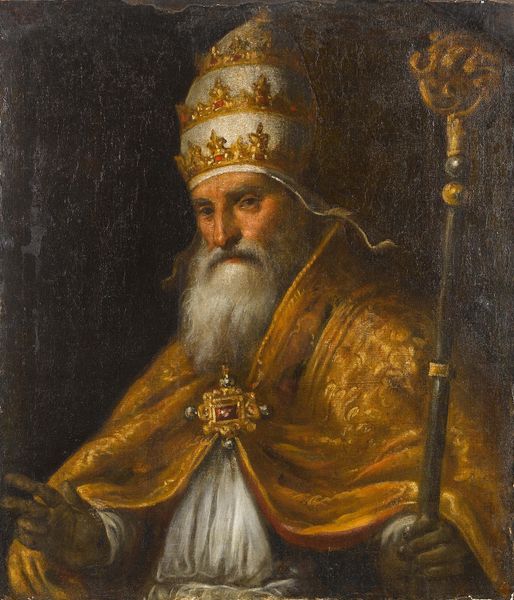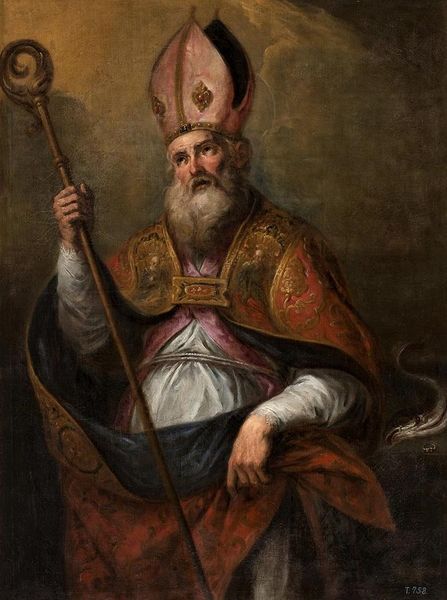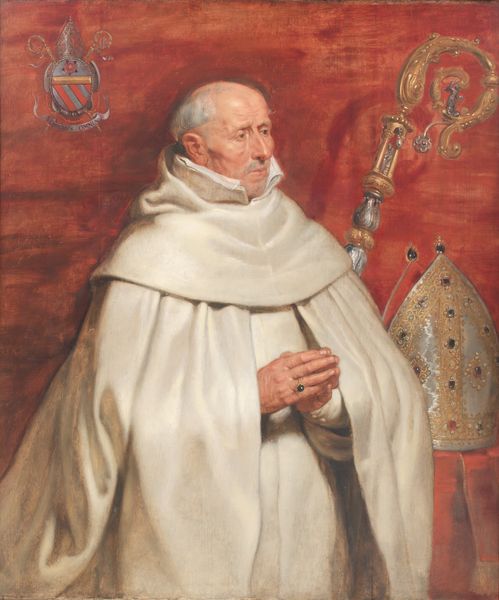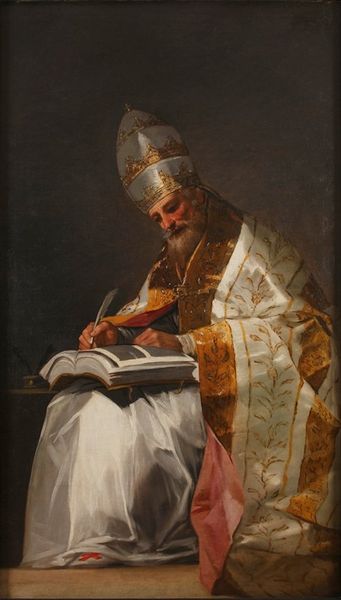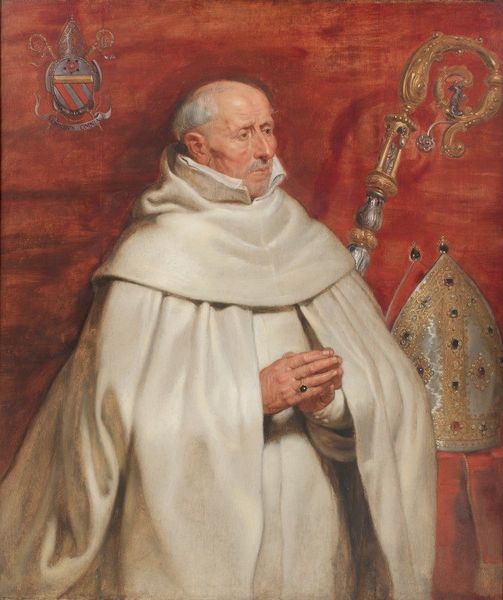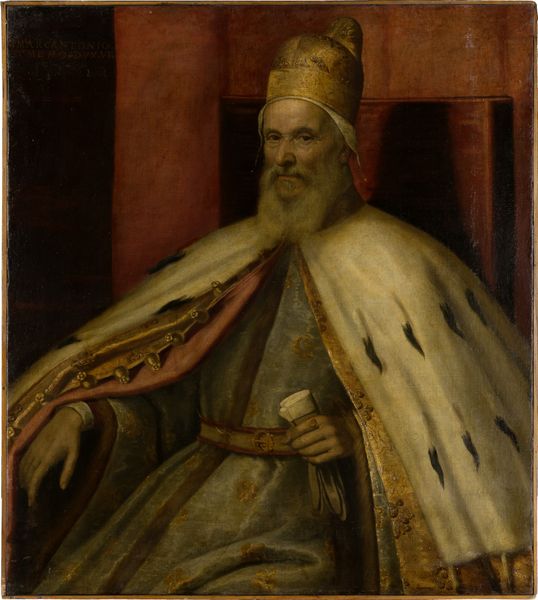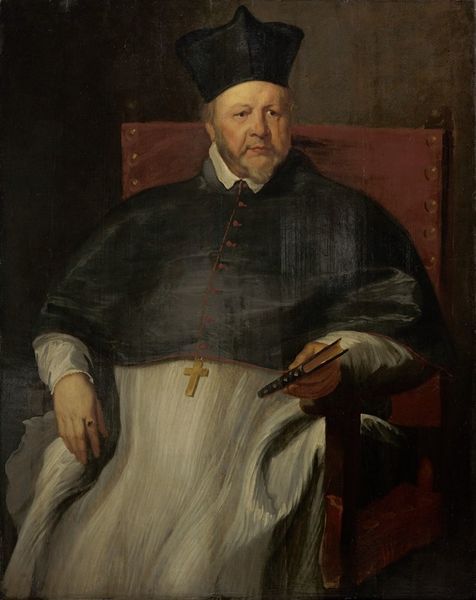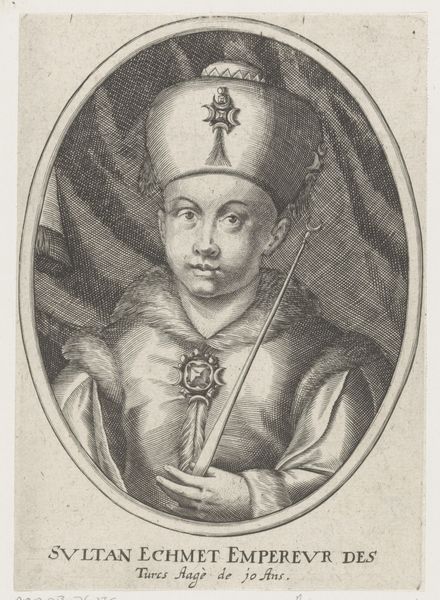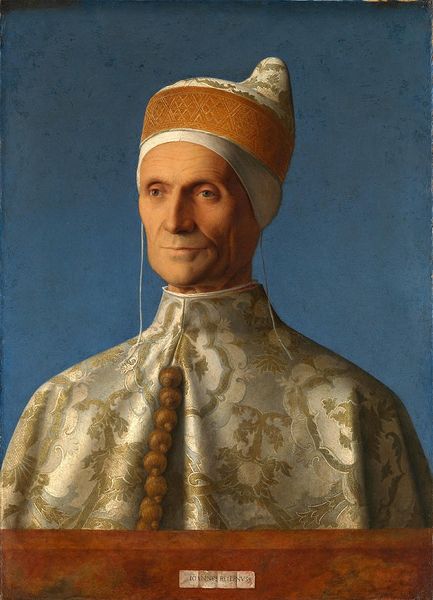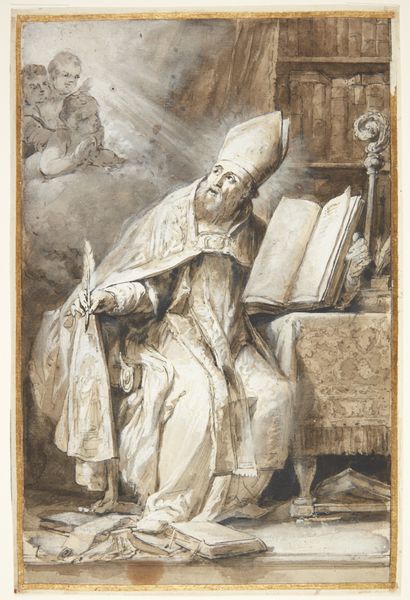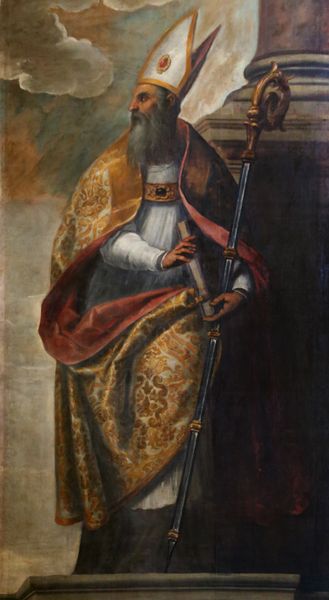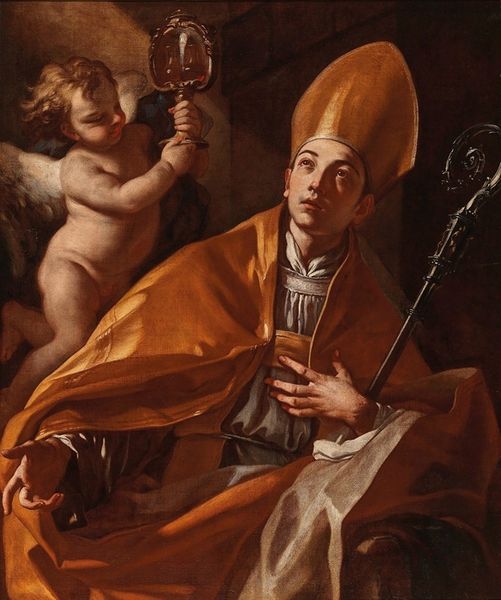
painting, oil-paint
#
portrait
#
baroque
#
painting
#
oil-paint
#
history-painting
Dimensions: 51 1/4 × 39 3/8 in. (130.3 × 100 cm)
Copyright: Public Domain
Curator: Look at the intensity of the gaze in this portrait, St. Gerardo Sagredo, Bishop of Csanád, painted by Bernardo Strozzi in 1633. The painting currently resides here at the Art Institute of Chicago. Editor: The figure's somber expression and muted color palette do lend it a contemplative mood, wouldn't you agree? And it looks massive... Oil paint, judging by its texture and luster? Curator: Exactly! Oil on canvas. Strozzi certainly utilizes the oil to highlight textures; notice how he captures the ornate details of the bishop’s mitre and cope, richly adorned with gold thread. And consider the context. The Baroque period saw the Church investing heavily in art, both to inspire faith and project power. The labor involved in producing textiles of this opulence were immense and signal this individual's elevated position in society. Editor: Indeed. The robes practically broadcast authority. How do you see this image participating in history-making, though? What’s the symbolic value beyond mere ornamentation? Curator: St. Gerardo, or Saint Gerard, was instrumental in converting Hungary to Christianity. Images of his martyrdom were used during times of political struggle in Hungary. Strozzi was from a time of much internal upheaval; his work for doges and prominent venetian families demonstrates his participation in promoting ideologies for those commissioning art. Editor: I’d say there is little to read beyond the celebration of the individual and an articulation of faith, but I recognize that images such as this portrait operate within power structures whether we consciously perceive those forces or not. The artist's skill clearly served these forces. I feel somewhat unsettled, knowing the grand scale on which materials and techniques served to articulate ideological views. Curator: It does provoke thoughts about labor, class and art's function as a conveyer of cultural power and identity during times of upheaval and growth. Editor: Precisely. An interesting perspective to take away today from the display of materials, the context of power, and this formidable man and artist’s rendering.
Comments
No comments
Be the first to comment and join the conversation on the ultimate creative platform.
